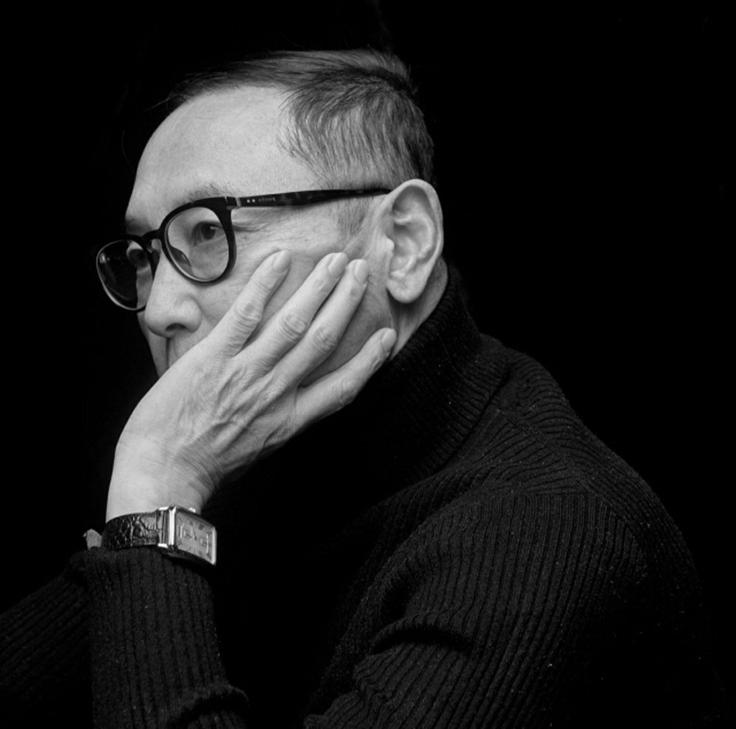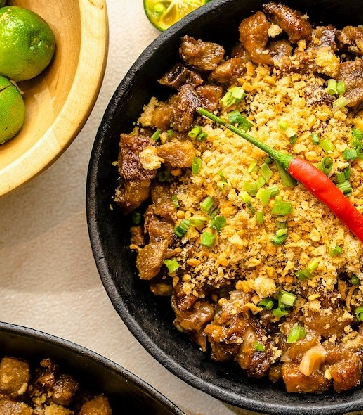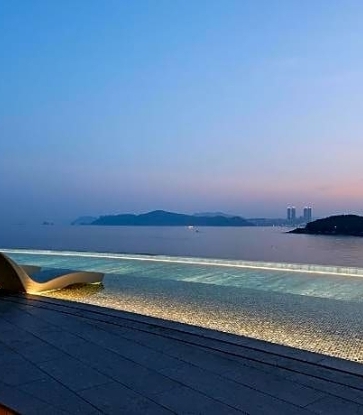
Renowned as one of Korea’s most iconic photographers, Kim Yong-ho has spent over 40 years breaking new ground, blurring the lines between commercial and fine art while spearheading change. Deeply influenced by the Modernism of the 1920s, Kim has crafted his own universe, not just through photography but across various creative fields, developing a distinctive visual language.
The poet Kim Nam-jo once remarked, “He’s more a philosopher than a photographer,” capturing the depth of Kim's artistry. Guided by the philosophy that "form is merely the surface of essence, and truth lies beyond," Kim has consistently sought out the new in the familiar, staying true to his belief that "you must never resemble anyone else."
For artist Kim Yong-ho, born and raised in Busan, the memories of his boyhood remain vivid. Reflecting on his childhood, he recalls one hot summer afternoon when he took a bus heading toward the sea. "It was during the school break, so the bus was nearly empty. As we left the city behind, the distant view of the blue sea, touching the horizon near the airfield, came into sight. The warm sunlight and the smell of the ocean poured in through the window, and the sunlit waves sparkled brilliantly. As the bus sped along the coastal road, a plane preparing to land cast a huge shadow as it passed low overhead. Just before the bus left the coastal road, I watched the plane slowly circling over the runway, growing smaller in the distance as the navigation flags faded from view. When the bus finally stopped, I got off and began walking along the coastal road, between the sea and the airfield. And so, I made my way to the ocean."
The runway where those planes once landed has now been transformed into Centum City, a bustling new urban district home to Asia’s largest department store, shopping malls, cinemas, and BEXCO, a major exhibition and convention center.
Kim Yong-ho describes Busan as 'a city where diversity breathes.' Rising from the scars of war, Busan grew rapidly both commercially and culturally, attracting artists and becoming a hub where various cultural elements coexist. The city offers a blend of luxury and fine art galleries, particularly around Haeundae’s Dalmaji Hill, where galleries with ocean views create the perfect environment for art lovers. Hidden gems, from undiscovered art pieces to the latest trends, can be found here, along with the romantic ambiance unique to this port city. Busan is a city that embraces both haute couture and accessible charm, ensuring a fulfilling experience no matter what you choose. Above all, the fact that you can enjoy all of this with the ocean as a backdrop makes it even more special.
This distinctive atmosphere of Busan has had a profound impact on Kim’s artistic journey. He credits this environment with his ability to become one of the rare artists in Korea who successfully navigates both commercial and fine art.
Having recently completed the Busan International Photography Exhibition with renowned global artists, Kim Yong-ho is now preparing for the upcoming 'Gucci Month of Culture' photography exhibition, an international project by Italian fashion house Gucci paying homage to Korean culture. Taking a brief moment to rest in his hometown of Busan amidst his busy schedule, Kim once again captures the city’s unique beauty through his lens, revealing the hidden splendor within the familiar. In his photography, Busan’s luxurious and trendy aspects shine even brighter.

Gwangandaegyo Bridge
‘You can feel the excitement of a trip to Busan. The endless sea stretching beyond the bridge and the distant skyscrapers rising up on the horizon only amplify that sense of awe.’

‘Ananti at Busan Cove epitomizes the essence of luxury retreats. As media art establishes itself as the cutting edge of modern artistry, Ananti masterfully incorporates these elements into its sculptures, capturing the elegance of its high-end resort concept. While natural retreats once dominated the landscape, today’s resorts cater to those seeking the pinnacle of sophistication and relaxation. Ananti at Busan Cove is a symbol of this new era of luxury, seamlessly blending state-of-the-art art installations with world-class facilities to create an unparalleled sanctuary for rest and rejuvenation.’
SURREAL NEWNESS by Paul.C, Village de Ananti

ARP
‘This restaurant is so remarkable that calling it a MICHELIN two-star experience for vegans wouldn’t be an exaggeration. It’s the kind of place worth traveling for just to savor the food. The dishes are beautifully presented, refined, and reasonably priced, making for a satisfying experience. While the high volume of guests makes it challenging to maintain peak conditions, it’s impressive to watch the two kitchen staff and one floor staff work diligently to craft each dish with care. Honestly, when I first visited, I didn’t even realize it was a vegan restaurant. But after that, I was eager to recommend it to my vegan friends. It’s an absolute must-visit when in Busan, and even if you’re not vegan, it’s well worth a stop. For vegans, it’s a place I wholeheartedly recommend.’

Gwangalli Beach
‘The vibe of 'Metropolis Busan' is undeniable. Just from the photos, the grand spectacle of Gwangandaegyo Bridge and Centum City unfold before you leave a lasting impression. However, this luxurious view, a testament to Busan's rapid development, is best appreciated from a yacht. In particular, the Pan Cruise offers a one-of-a-kind experience, departing from Busan Harbor and touring Haeundae and Dongbaek Island, culminating in a nighttime party with fireworks on this two-day, one-night yacht cruise. On weekdays, it even sails to Japan. While taking a small yacht to explore Busan freely has its charm, the Pan Cruise provides a more accessible yet equally relaxing way to enjoy the city. Spending two days aboard allows travelers to fully immerse themselves in Busan's allure, making the journey all the more delightful.’

Songdo Beach
‘If my memory serves me right, Songdo Beach was the first in Korea to feature a diving platform. Although there are many beaches like Haeundae and Gwangalli, my family always chose Songdo because of that very platform. At the time, it was the only place where you could swim in the sea and enjoy diving, with a cable car nearby to complete the experience. While the diving platform still remains today, the atmosphere has changed slightly from what it once was. Yet, it continues to be a special place, preserving the original charm and beauty of Korea’s early beach culture. When I revisited after many years, I was surprised by the transformation—it now feels entirely exotic. The beach itself is smaller than Gwangalli or Haeundae, but with towering apartments rising behind it, I felt as if I had been transported to Rio de Janeiro. The blend of classic charm and foreign allure makes Songdo feel even more romantic than its larger counterparts.’

Bongnae-dong Pojangmacha Street in Yeongdo
‘Crossing over Yeongdo Bridge, you’ll find a small port where boats come and go, with a stretch of pojangmacha stalls extending for about 100 meters nearby. This spot, dedicated solely to meat, stands in striking contrast to the sleek ‘hot place’ situated just next door, making it all the more intriguing. While the term ‘hot place’ typically conjures up images of trendy, capital-driven spaces, these pojangmacha stalls evoke a nostalgic atmosphere, as if preserving the spirit of a bygone era. On a sweltering summer night, when the cool breeze starts to blow, the combination of the pojangmacha, the weathered boats along the shore, and the distant view of Yeongdo Bridge creates a captivating scene. It felt like a place where youth and nostalgia converge, a space where you could spend the night laughing and sharing stories, truly making it something special.’

Gamcheon Culture Village
‘People often refer to this area as the 'hill slum' of Busan. After the war, waves of refugees flocked here, leading to homes being tightly packed all the way up to the mountain peaks. Though the narrow alleyways wind closely together, what makes this neighborhood fascinating is how no house blocks the view of the one above. It’s as if the entire area was designed like Santorini in Greece, with every home offering a clear view of the sea and the landscape below.
As the houses were painted in vibrant colors, this once poverty-stricken area transformed into something truly beautiful. There's a lot of talk about urban regeneration these days, and too often that means tearing down old homes to build new apartments. But here, the significance lies in preserving the old ecosystem while reviving the area as a cohesive village. The arrival of tourists, the emergence of shops in every alley, and the space becoming a place of coexistence with local residents all speak to this unique transformation. It’s as if this once struggling neighborhood has been reborn into a picturesque Santorini-like destination.
Of course, Santorini was developed as a tourist destination from the start, with a more natural progression, while this place has a different history and process. After the war, residents living in hardship gradually beautified their village, which organically turned into a tourist spot. While it now boasts breathtaking views of the sea, its true significance lies in being a cultural space marked by the pain and suffering of war, making it all the more special.’

United Nations Memorial Cemetery
‘The United Nations Memorial Cemetery is a deeply symbolic place, honoring the many soldiers from 16 nations who sacrificed their lives during the Korean War to defend a foreign land. Looking out over the rows of distant high-rise apartments, one realizes that Korea’s prosperity today was built on the foundation of their sacrifice. The people living in those apartments now enjoy comfortable and happy lives, but it is thanks to the soldiers from across the globe who fought here that we can live in peace and freedom.
I intentionally captured this photo of the UN Memorial Cemetery because many people overlook this significant place and show little interest in it. Having once lived nearby, I believe it's important to remember that Busan's prosperity today is largely due to the soldiers who made the ultimate sacrifice here 70 years ago. Their dedication played a major role in Busan's rise as an international city, and I felt this point needed to be emphasized.
The UN Memorial Cemetery is not just a park—it’s a meaningful place, much like Korea’s National Cemetery, and worth visiting at least once. I believe it’s important for foreigners to visit and remember those who gave their lives for Korea, which is the sentiment I aimed to capture in this photo.’

Jagalchi Market
‘Jagalchi Market rapidly developed after the war. Yeongdo Bridge, famous since those times, became a symbol for separated families who promised to reunite there, saying, 'If we’re separated by the war, let’s meet at Yeongdo Bridge.' Naturally, the bridge and Jagalchi Market became intertwined, bustling with small boats and fishing vessels coming in and out, as well as ferries crisscrossing the waters. With limited railways and road networks at the time, many traveled by boat, conducting business between Tongyeong, Masan, Jinju, and other areas. Jagalchi Market’s humble raw fish restaurants thrived by catering to these traveling merchants.
I, too, experienced the charm of this market, dining at seafood stalls by the sea, which had a pojangmacha vibe. Jagalchi market, the precursor to the Bongnae-dong food stalls, started as a few carts and tables, capturing the essence of everyday life. To this day, Jagalchi market remains true to its roots, with modest tented canopies preserving its tradition. It’s a place where you can still feel the down-to-earth customs and atmosphere of Busan, a spot once frequented by dockworkers looking to unwind with a drink—a place steeped in their struggles and stories.
However, it’s unfortunate to see that Jagalchi Market is not as prosperous as it once was. Where crowds used to flock to the market, its vibrancy has diminished, with people now dispersed across various other locations.’

Bosu Book Street
'In an era before books were mass-produced as they are today, this special place drew those with a thirst for knowledge. I, too, would visit this haven, browsing through old foreign fashion magazines and finding inspiration for my own style. Japanese magazines like Men’s Club and Non-no were particularly popular, and with ready-to-wear clothing scarce at the time, learning about fashion through these magazines was the norm. Beyond fashion, the shelves were lined with art collections, catalogs, and a variety of books on fine arts. Though foreign books weren’t easily imported back then, this place offered a treasure trove of literature in philosophy, humanities, history, and geography, making it an invaluable resource for the intellectually curious.'

















